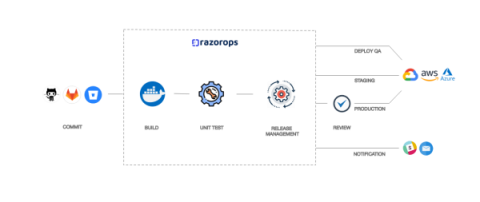Operations | Monitoring | ITSM | DevOps | Cloud
Latest News
FireHydrant is now free for small teams
We envision a world where all software is reliable, and today we’re making that vision more of a reality for small teams. Available today, our new Free Tier helps smaller teams wrangle their reliability challenges with our enterprise-grade Incident Management, Service Catalog, and communications products. Our new package also has every feature that makes FireHydrant great with generous limitations.
What is CICD Pipeline? Explanation of CICD Pipeline along with Examples.
Continuous Integration(CI) is a software development practice where developers frequently merge the code and the changes in a central repository. The important goals of continuous integration is to find and resolve the bugs more quicker, improve the software quality, and reduce the time taken to validate and release new software updates. Continuous Delivery(CD), which is done on the top of Continuous Integration and includes the practice of automating the entire software release process and builds.
Reel in your activities: announcing cancellable activities and crons
Feature announcement: You can now cancel Platform.sh activities through the CLI and management console. Last year we released activity scripts, custom scripts that you can upload to your projects to run in response to any project or environment activity. In March we announced parallel activities, a queue that allows two simultaneous processes across your environments. Today we’re announcing another change to your activities—you can now cancel them.
Deployment Frequency Explained
While metrics have always been fundamental to improvement in the business world, the growing prominence of DevOps in recent years has elevated their importance in the context of software development. To build a continuous improvement culture, you need a set of metrics that allows you to establish a baseline and inform where the improvement opportunities lie. Arguably the most popular of them is DORA metrics. In this post, we will focus on Deployment Frequency, one of four DORA metrics.
Managed Kubernetes Comparison: EKS vs AKS
Rolling out Roles
We’ve been pretty lucky at incident.io to be able to avoid dealing with more complex authentication issues for quite a while, because we piggy-back on Slack to know who you are and which organisation you work in. Whole companies have been built around doing authentication and user profiles really well, so it was pretty neat to be able to avoid doing most of that work for so long!
When to hire an Incident Commander
What comes to mind when you hear the term 'incident commander'? You are not alone if you think about fancy, tri-cornered hats, well-polished shoes, and a uniform weighed down by medals. The roles of incident commander, incident manager, or technical escalation manager have been typical in large organizations but are gaining popularity in smaller companies. For the purposes of this article, we will use the term 'incident commander,' but any of the above titles could work.
How to Implement Global View and High Availability for Prometheus
Platform Engineering teams are the developer's cloud provider
Organizations rely more than ever on their engineering teams to get in front of their customers. Quickly delivering the latest functionalities to end-users in a reliable way can make or break a company these days. This need raises the pressure on engineering to deliver a scalable platform, rollout application updates faster, and manage applications efficiently once in production.











